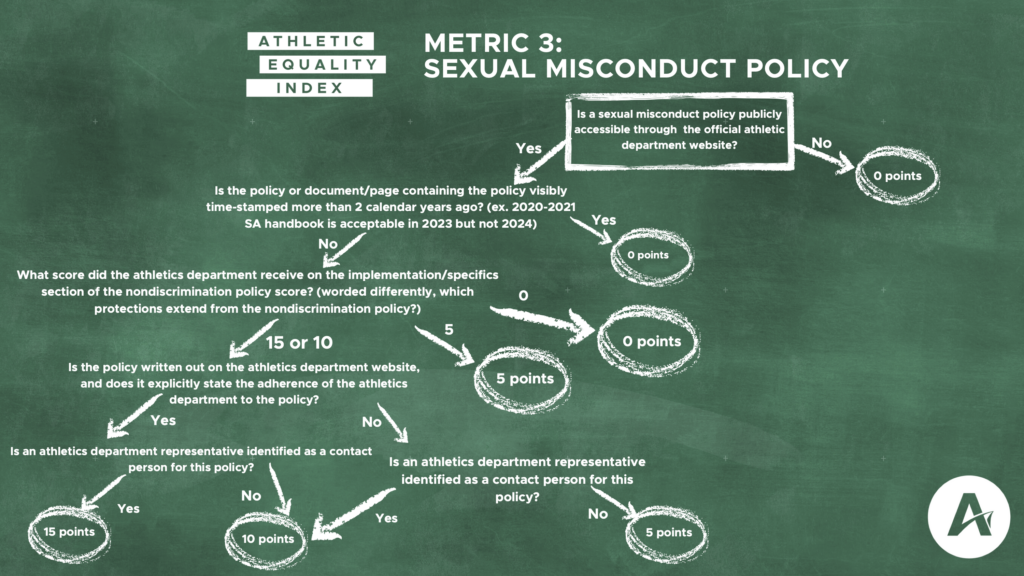Has the department endorsed a sexual misconduct policy protecting LGBTQ+ athletes?
Methodology update as of July 2023: If AEI evidence (or the document or page containing the evidence) has a visible time-stamp, date range of application, or departmental review date, such time-stamps must be dated within the last 2 calendar years to qualify for scoring purposes. Evidence that is explicitly timestamped more than 2 calendar years before an institution’s annual audit cannot be reasonably assumed to remain unchanged in its application to current students unless explicitly stated by the athletic department. We use calendar years to make these distinctions; for example, a 2020-2021 student-athlete handbook is acceptable evidence for an audit conducted in 2023, but would not be acceptable for an audit conducted in 2024.
- Over 14% of LGB students experience sexual harassment or abuse in college.
- Female and transgender undergraduate students report experiencing nonconsensual sexual contact at rates about 5x higher than male students.
- While the NCAA encourages institutions to attest that they educate staff and share their policies with students, there are no mandates requiring them to do so.

LGBTQ+ college students are particularly vulnerable to sexual misconduct. A 2015 study by the Association on American Universities found that nearly 14% of LGB college students experience sexual harassment or abuse, resulting in more than 6% changing their school or major. Transgender and female undergraduates are more vulnerable with over 24% reporting nonconsensual sexual contact- rates that are about five times higher than male students. In response to these trends, the NCAA released a handbook and toolkit suggesting athletic departments’ responsibility for providing athletes an equal-opportunity environment. In 2017, the NCAA Board of Governors adopted a Sexual Violence Policy (expanded in 2020) suggesting leaders on each campus annually attest to their compliance. However, no mandates around the implementation of these policies exist. Moreover, those responsible for providing this information do not need to demonstrate how they are educating staff and student-athletes or publicly display such information. As a result, student-athletes may not be fully aware of such policies or reporting mechanisms. Public access to sexual misconduct policies in athletics departments may offer one avenue by which institutions can increase the reporting rates of sexual misconduct.
Association on American Universities. (2015). AAU climate survey on sexual assault and sexual misconduct. Publicly available here.
National Collegiate Athletic Association (2014a). Addressing sexual assault and interpersonal violence: Athletics’ role in support of healthy and safe campuses. Publicly available here.
National Collegiate Athletic Association (2014b). Sexual violence prevention: An athletics tool kit for a healthy and safe culture. Publicly available here.